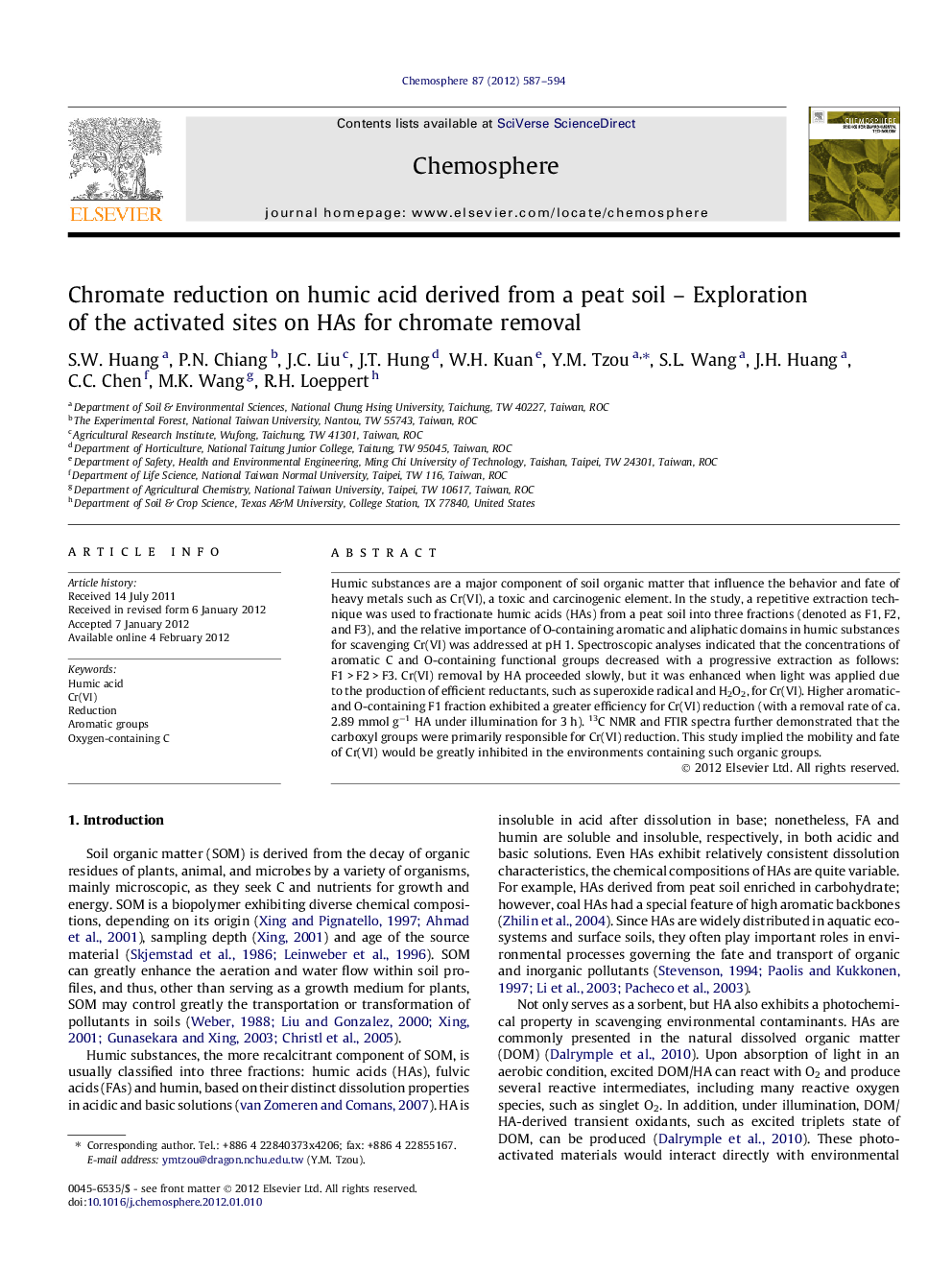| Article ID | Journal | Published Year | Pages | File Type |
|---|---|---|---|---|
| 4409750 | Chemosphere | 2012 | 8 Pages |
Humic substances are a major component of soil organic matter that influence the behavior and fate of heavy metals such as Cr(VI), a toxic and carcinogenic element. In the study, a repetitive extraction technique was used to fractionate humic acids (HAs) from a peat soil into three fractions (denoted as F1, F2, and F3), and the relative importance of O-containing aromatic and aliphatic domains in humic substances for scavenging Cr(VI) was addressed at pH 1. Spectroscopic analyses indicated that the concentrations of aromatic C and O-containing functional groups decreased with a progressive extraction as follows: F1 > F2 > F3. Cr(VI) removal by HA proceeded slowly, but it was enhanced when light was applied due to the production of efficient reductants, such as superoxide radical and H2O2, for Cr(VI). Higher aromatic- and O-containing F1 fraction exhibited a greater efficiency for Cr(VI) reduction (with a removal rate of ca. 2.89 mmol g−1 HA under illumination for 3 h). 13C NMR and FTIR spectra further demonstrated that the carboxyl groups were primarily responsible for Cr(VI) reduction. This study implied the mobility and fate of Cr(VI) would be greatly inhibited in the environments containing such organic groups.
► The first extracted fraction of humic acids was more aromatic and polar in nature. ► O-containing and aromatic groups in HAs were responsible for Cr(VI) reduction. ► Aliphatic C on HA was quite resistant to Cr(VI) attack. ► Aliphatic C with O-containing groups exhibited an reactivity toward to Cr(VI). ► Photo-induced the production of superoxide and H2O2 is responsible for Cr(VI) reduction.
